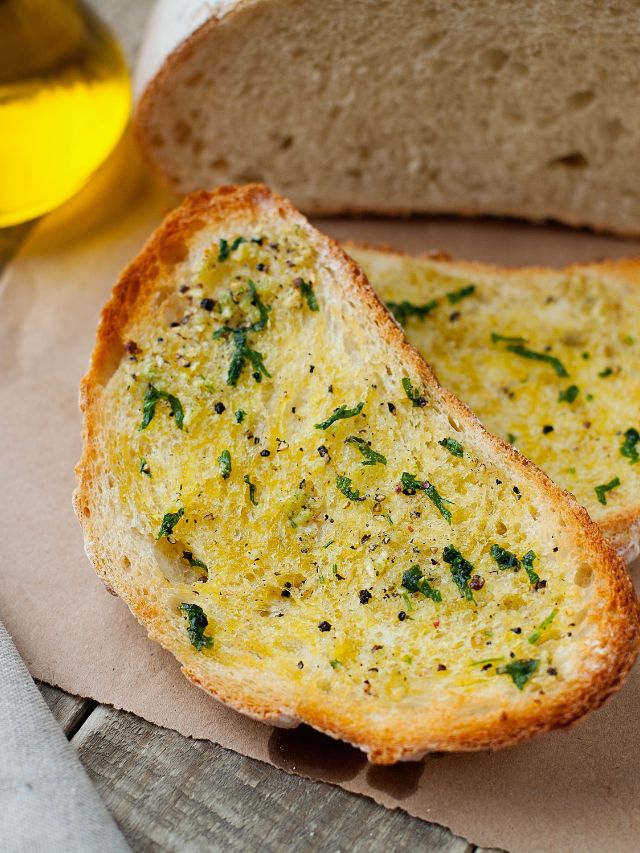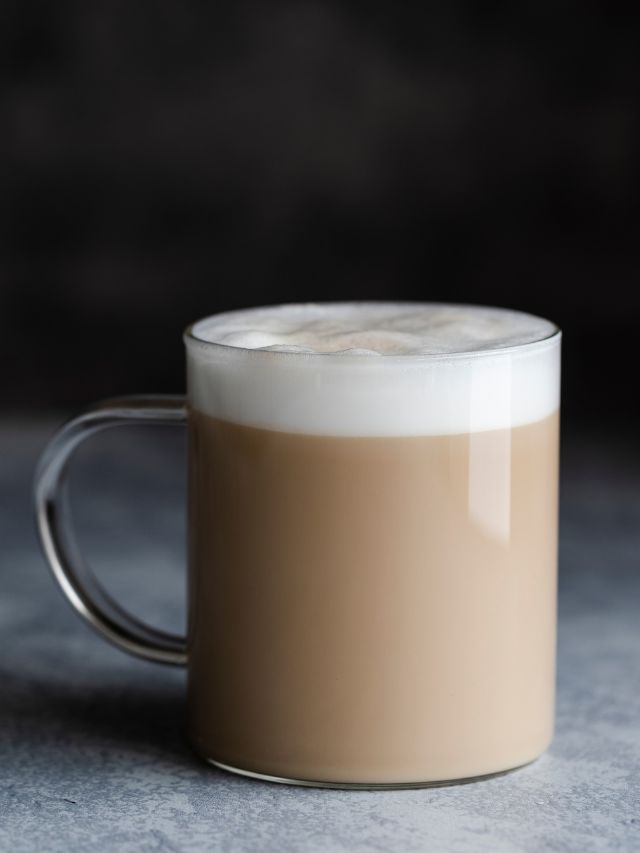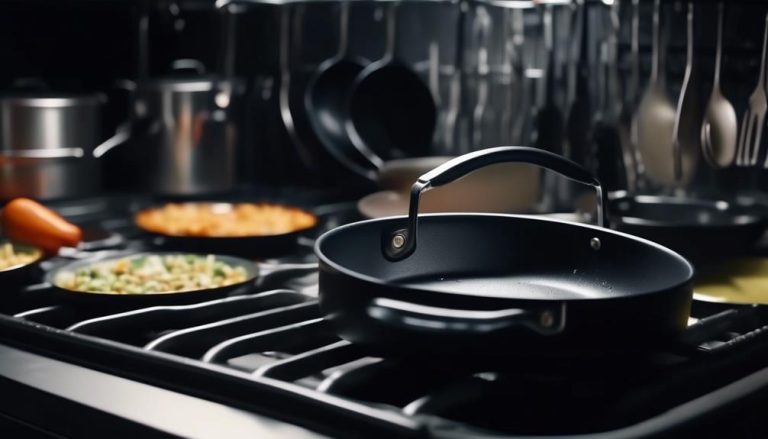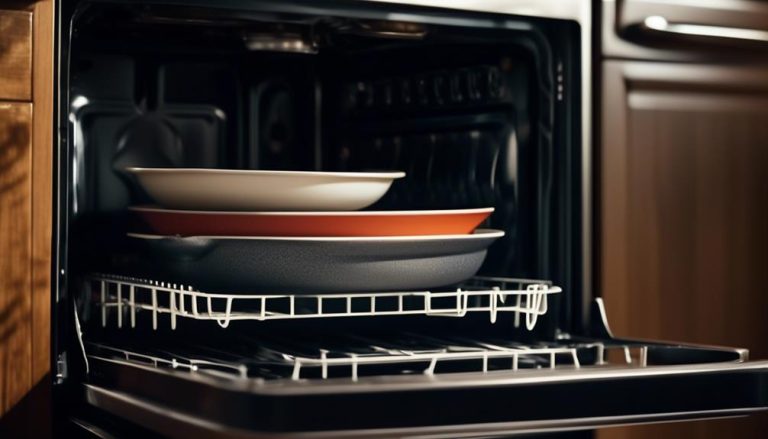Is A Cappuccino Sweet: Cappuccinos Coffee Drink

When you step into a café and peruse the menu, you might find yourself wondering, “Is a cappuccino sweet?”

Cappuccinos traditionally have a balance of flavors, as they’re made with equal parts espresso, steamed milk, and milk foam.
While they’re not as sweet as some espresso-based drinks like lattes or mochas, the steamed milk and foam give them a creamy texture that can make them appear less bitter than straight espressos.
The sweetness of a cappuccino depends on factors such as the type of milk used or if any sugar or syrups are added.
As a coffee lover, it’s essential to know what to expect when ordering your favorite beverages.
So ultimately, how sweet your cappuccino drink tastes is up to you and your preferences. Enjoy the journey of discovering your perfect cappuccino balance!
Here’s the scoop on the sweetness level of cappuccinos and how they compare to other popular coffee drinks.
What is a Cappuccino?

Cappuccino, a beloved coffee drink, can be found in numerous coffee shops around the world. It consists of equal parts of shots of espresso and hot milk, with a layer of a milk top.
Unlike other espresso drinks, cappuccino has a smaller size, providing a concentrated yet balanced taste.
It can be customized with different kinds of milk such as soy milk, almond milk, or regular milk.
For those seeking a stronger coffee flavor, an extra espresso shot can be added.
To enhance the experience, many sprinkle a dusting of chocolate powder or chocolate shavings on top.
Complemented by a touch of brown sugar or simple syrup for a hint of natural sweetness.
The distinct layers of frothed milk and hot liquid create a visually appealing presentation.
While the caffeine content remains relatively moderate compared to larger drinks like the Starbucks cappuccino or flat white.
With its harmonious blend of espresso, less foam, and percent milk, cappuccino offers a satisfying and well-rounded coffee experience.
Cappuccino Basics

Here’s the scoop on the three main components of a cappuccino: part espresso, steamed milk, and milk foam.
Understanding these ingredients will help you recognize the flavor and texture of a cappuccino, as well as its sweetness.
Espresso
The base of your cappuccino is a shot of espresso, which provides a bold, slightly bitter coffee taste. Espresso is typically made with dark roast coffee and ground finely.
The key to a good espresso is proper extraction. Which brings out the flavors without making it overly bitter or sour.
The amount of sweetness that an espresso can impart to your cappuccino will depend on the beans used, the roast, and the extraction method.
Steamed Milk
Steamed milk is added to the espresso to mellow out the strong coffee taste and provide a smooth texture.
The natural lactose sugar present in milk can add a hint of sweetness to your cappuccino.
The amount of milk and the method used to steam it can greatly influence the overall sweetness of your cappuccino.
Be cautious of adding too much milk, as this could make your cappuccino tastes more like a latte or milk drink.
Milk Foam
A well-made cappuccino is topped with a layer of steamed milk foam. This foam provides a light, creamy texture that further enhances the sweetness of the milk.
Quality milk foam can help balance the flavors in your cappuccino, providing a pleasant contrast to the bold espresso.
To achieve the best foam, steam your milk until it reaches the desired frothy consistency.
By understanding the role that each component plays in your cappuccino, you can better appreciate its unique flavor profile.
Including the slight natural sweetness that comes from the steamed milk and milk foam.
Though a cappuccino is not as sweet as some other coffee drinks, its balanced combination of espresso, steamed milk, and milk foam can make it a delicious choice for a morning or afternoon pick-me-up.
Is a Cappuccino Sweet?

Flavor Profile
When you sip a cappuccino, you’ll first notice that it’s not as sweet as other coffee drinks like lattes or mochas.
The reason for this is that cappuccinos are made with espresso, which has a slightly bitter taste.
However, this bitterness is balanced by the steamed milk and foam that’s added to the drink. Giving it a creamy texture.
Cappuccinos also offer you the chance to customize the flavor according to your preferences.
By adding flavored syrups or powders, such as vanilla, caramel, or hazelnut, you can make your cappuccino as sweet as you’d like.
This allows you to have a cappuccino that’s tailored to your specific taste buds.
Sugar Content
The sweetness of your cappuccino largely depends on the amount of sugar that’s added to it.
Although cappuccinos are not typically sweet, you can control their sweetness by adjusting the sugar content.
Some people prefer to enjoy cappuccinos without any added sugar, embracing the balance between bitter espresso and creamy milk.
However, if you prefer sweeter coffee beverages, you can add sugar to your cappuccino according to your desired taste.
It’s essential to keep in mind that adding a significant amount of sugar can increase the calories in your cappuccino.
So it’s best to be mindful of your sugar intake if you enjoy these drinks regularly.
While cappuccinos are not inherently sweet, you have the flexibility to adjust their sweetness by adding sugar or flavored syrups.
Regardless of how you choose to enjoy your cappuccino, you’ll appreciate the rich espresso flavor that’s balanced by the light, creamy milk, and foam.
Cappuccino Variations
Iced Cappuccino
An iced cappuccino offers a refreshing alternative for those warm days when you still crave a creamy, espresso-based beverage.
To make one at home, simply pour freshly brewed espresso over ice and add cold milk. Ensuring the right balance between the bitter espresso and the smooth, cooling milk.
Top it off with a dollop of whipped cream or even an airy milk foam that brings a lightness to savor.
In Italy, you may find more traditional versions of the iced cappuccino, crafted by skilled baristas who use a machine to froth and chill the milk before adding it to the iced espresso.
This method produces a velvety, creamy texture that complements the bold espresso and enhances the overall flavor.
Flavored Cappuccino

When it comes to personalizing your cappuccino, flavored syrups and powders can elevate your coffee-drinking experience to new heights.
Popular options include vanilla, caramel, and hazelnut syrups or a dusting of cocoa powder or cinnamon for a subtle twist.
Experiment with different flavor combinations to find the one that compels your taste buds.
To create a flavored cappuccino at home, start by adding your desired syrup or powder to the cup before pouring in your hot espresso.
As it combines with the flavored syrup, you’ll notice the mild sweetness being infused into the brew.
Finally, steam your milk, ensuring a fine, velvety texture before adding it to the mixture.
With flavored cappuccinos, the opportunities are only limited by your imagination and taste preference.
Remember, adding sweeteners or flavored syrups will make your cappuccino sweeter. Allowing you to customize the balance between bitter and sweet according to your taste.
Keep in mind, however, that some coffee purists may shy away from these additions, preferring the natural flavors and authentic experience of the traditional cappuccino.
Whatever your preference, the world of cappuccino variations is yours to explore, so enjoy the journey and indulge in your newfound favorite coffee drinks.
Cappuccino vs Latte
When it comes to cappuccino vs latte, the main difference lies in the ratio of milk to espresso.
Cappuccino, made with a cappuccino machine, consists of one-third espresso, one-third steamed milk, and one-third milk foam.
It is a strong espresso-based coffee drink with a thick layer of foam, making it a popular choice for coffee lovers who enjoy a robust and creamy experience.
On the other hand, a latte is a milk-centric beverage that typically contains more milk and less foam.
It is made by pouring a single shot of espresso into a cup and filling the rest with hot milk, topped with a thin layer of milk foam and often decorated with latte art.
Latte lovers appreciate its smooth and velvety texture, allowing the taste of coffee to shine through while still providing a delicious treat.
Both cappuccino and latte can be customized with different kinds of milk, such as lactose-free milk or coconut oil for those with dietary restrictions.
Whether you prefer a cappuccino with its strong espresso flavor and thick foam or a latte with its milk-dominant composition and silky texture, there’s a good chance you’ll find your next favorite hot beverage among these delicious drinks.
Cappuccino Making at Home

Selecting Your Equipment
To make a delicious cappuccino at home, you’ll need a quality espresso machine and a milk frother.
The espresso or coffee machines are essential for pulling the perfect shot of espresso, while the milk frother will help you create that creamy, velvety milk foam that sets a cappuccino apart from other espresso-based drinks.
Cappuccino Recipe
Follow these simple steps to make a cappuccino at home:
- Espresso: Start by pulling a double shot of espresso using your espresso machine. Use fresh, high-quality coffee beans for the best flavor.
- Steamed milk: Steam about 1/3 cup of milk using your espresso machine’s steam wand, or your separate milk frother, until it reaches a temperature of around 150°F (65°C). The type of milk you use can have an effect on the texture of your steamed milk and milk foam. Whole milk usually produces a creamier and richer foam than low-fat milk.
- Milk foam: Using your milk frother or steam wand, create a thick layer of foamed milk on top of the steamed milk. This is what gives a cappuccino its velvety texture.
- Assemble: Pour the espresso into a cup, followed by the steamed milk, and finally spoon the milk foam on top.
Tips for Perfect Foam
Achieving the perfect milk foam is essential for a great cappuccino. Here are some tips to help you create smooth and glossy foam:
- Swirl your steamed milk after frothing it to prevent it from separating.
- Gently tap the pitcher of steamed milk on the counter to remove any large bubbles.
- Practice makes perfect – experiment with different techniques and frothing tools to find what works best for you.
Remember, a well-made cappuccino should have a balance of flavors, textures, and richness, with a distinct espresso taste complemented by the creaminess of the steamed and foamed milk.
With a bit of practice and the right equipment, you’ll be enjoying delicious, homemade cappuccinos in no time!
Controlling Cappuccino Sweetness

Personal Preferences
When it comes to enjoying a cappuccino, the level of sweetness is ultimately up to your personal taste.
While a traditional cappuccino is lightly sweetened by the natural sugars in milk, you have the option to further sweeten it according to your preferences.
Typically, if you prefer a creamier texture, using more milk and less espresso in your cappuccino results in a sweeter taste.
Adjusting the sweetness of your cappuccino can also depend on how you make it.
Whether you’re using a fancy espresso machine, a stovetop Moka pot, or a French press, you have control over the amount of sugar or sweeteners you add to your drink.
Keep in mind, though, that adding sugar does increase the calorie count, so be aware of the tradeoff if you’re watching your intake.
If you’re a fan of Starbucks, you might be familiar with their wide range of flavored syrups. This is another way to customize your cappuccino’s sweetness.
After all, who doesn’t love adding a pump of caramel or vanilla syrup to amp up the deliciousness?
Alternative Sweeteners
For those who desire sweetness but want to cut down on sugar or calories, there are plenty of alternative options available.
Consider using natural sweeteners like stevia, erythritol, or xylitol, which can all be a healthier choice while still providing the sweetness you crave.
If you’d like to explore options beyond traditional sugars and sweeteners, you can also experiment with adding spices to your cappuccino.
Cinnamon, nutmeg, and cardamom are delicious choices that lend a unique flavor profile and aroma to your drink without increasing the calorie count.
So, while a classic cappuccino may not be overly sweet, you have the power to tailor the sweetness to your liking by adjusting the milk-to-espresso ratio, using sugar or alternative sweeteners, or even experimenting with flavored syrups and spices.
Enjoy the process of crafting your perfect cappuccino and making it truly your own!
Popular Cappuccino Culture and Variations

Italian Cappuccino
Traditional Italian cappuccino is a beloved beverage, and it’s known for its equal parts of espresso, steamed milk, and milk foam.
As a brewed type of coffee drink, it’s less sweet compared to lattes or mochas. It features a creamy texture, and the experience varies based on where you drink it.
In Italy, a cappuccino is typically enjoyed in the morning, often with a small pastry.
Remember that each cafe and barista can have its unique version, so no two Italian cappuccinos are exactly alike.
American Style Cappuccino
In the United States and other parts of North America, the cappuccino has undergone significant changes as a result of popular coffee chains such as Starbucks.
The American style cappuccino tends to be larger than its Italian counterpart and may feature variations like flavored syrups, whipped cream, or even iced versions.
These adjustments often make the American cappuccino sweeter and more dessert-like compared to the traditional Italian version.
When you visit a coffee shop in North America, you may notice additional menu items like macchiatos, Americanos, or the famous Frappuccino.
These espresso-based drinks offer different flavor profiles and levels of sweetness.
Don’t hesitate to sample various options available in your favorite coffee house or fast-food chain to find the perfect combination for your taste buds.
Just keep in mind that these variations may not adhere to the traditional cappuccino recipe entirely but can still provide you with a delicious coffee experience.
Being a coffee connoisseur exposes you to a world of unique flavors and styles.
Whether you prefer the traditional Italian cappuccino or love experimenting with the American style variations, remember that your personal preference is what matters most.
Take time to explore different cafes and blends so that you can appreciate the diverse culture and history behind these popular coffee beverages.
The Cappuccino Experience
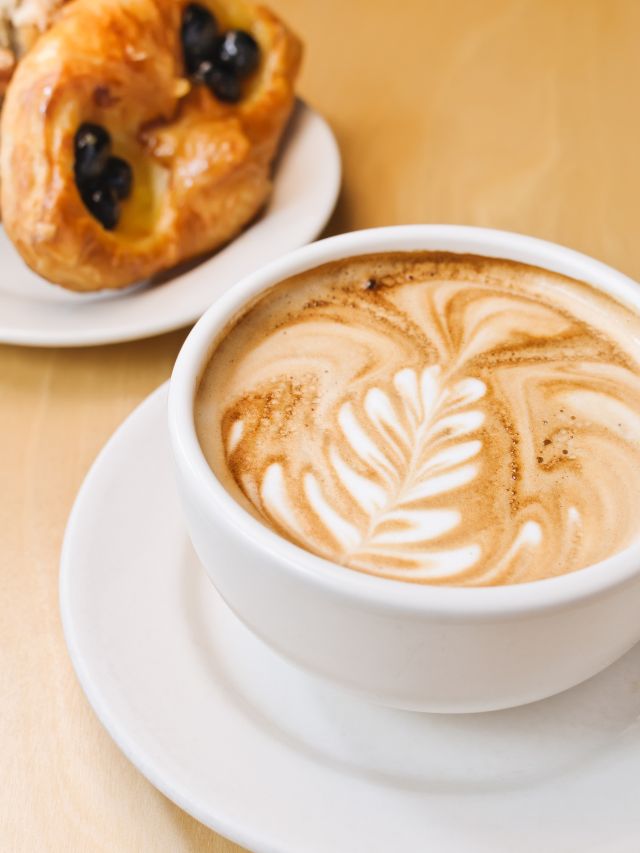
Taste Pairings
When enjoying a cappuccino, you might notice that it’s not overly sweet but still offers a pleasant taste due to the milk content.
Cappuccinos are a great coffee choice for those who prefer a balance between bitter and sweet. They often pair well with sweet pastries, such as croissants or Danish treats.
This balance between bitterness and sweetness can be a delightful pick-me-up for both adults and children alike.
As a coffee lover, you might enjoy exploring various types of coffee, with cappuccinos offering a slightly sweeter experience compared to black coffee or espresso.
Ceramic Cups versus Porcelain
While indulging in a cappuccino, you might also notice the vessel it’s served in. The choice between ceramic and porcelain cups can impact your overall experience.
Here are some key differences to consider:
- Heat Retention: Ceramic cups are typically thicker and offer better heat retention. This means your cappuccino will stay warm longer, allowing you to savor it.
- Weight: Porcelain cups are generally lighter than ceramic cups, providing a more delicate feel in your hands while sipping on your cappuccino.
- Aesthetics: Porcelain cups often have a more refined and delicate appearance, while ceramic cups can be more casual and rustic. Your personal style preferences might influence your choice of cup.
Whether you enjoy your cappuccino with a sweet pastry, in a ceramic or porcelain cup, or even with a dollop of whipped cream on top, it’s all about crafting your ideal coffee experience.
Embrace your personal flavor and presentation preferences as you savor this delightful beverage.
Tips to Remember

To create a good cappuccino, there are a few tips to keep in mind. First, it’s important to use an espresso machine to extract a strong espresso flavor.
Drip coffee won’t provide the same intensity. Secondly, pay attention to the milk-to-espresso ratio.
A cappuccino should have less milk compared to its espresso counterpart, making it smaller in size. This ensures a balanced and bold flavor profile.
Additionally, opt for whole milk or a milk alternative with a higher fat content for a creamier texture and richer taste.
When frothing the milk, aim for a velvety milk froth rather than large bubbles. It’s crucial to pour the milk slowly and at an angle to create distinct layers in the cup.
For added sweetness, consider using natural sugar instead of artificial sweeteners.
While convenience stores may offer cappuccino, seeking out a specialty coffee shop or café will likely provide the best choice.
Finally, if you’re more inclined towards a milk-dominant drink, a caffè latte might be your next level of indulgence.
So, next time you’re craving a cappuccino, focus on the strong espresso flavor, the perfect milk froth, and the delicate balance of layers that crown this popular drink.
Final Thoughts
Cappuccino is a very popular Italian coffee-based drink that combines espresso, hot milk, and steamed milk foam.
It’s usually served in a 6 oz cup so the proportions of each ingredient can be controlled.
Espresso machines work by passing hot water through tiny grinds of regular coffee beans to extract the flavor and aroma of the beans.
Milk is then added to the espresso and topped with steamed milk foam, giving the cappuccino its distinctive flavor.
The size of the drink ensures that all the ingredients are balanced to create the classic cappuccino flavor.

Get the scoop on more like this:


